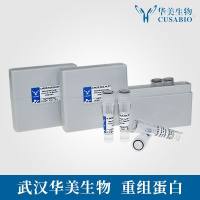Hemocytes of the horseshoe crab contain a family of arthropod peptide antibiotics, termed the tachyplesin family, and an antibacterial protein, called anti-LPS factor, of which the former is located in the small (S) granules and the latter in the large (L) granules of the hemocytes (
1 –
5 ). In our ongoing studies on granular components, we have identified a novel defensin-like substance, named big defensin, present in both L- and S-granules (
6 ). This substance strongly inhibits the growth of Gram-negative and Gram-positive bacteria, and fungi, such as
Candida albicans (Table 1 ). The isolated big defensin consists of a total of 79 amino acid residues, in which the COOH-terminal region composed of 37 amino acids resembles mammalian defensins. Big defensin, however, is distinct from the mammalian defensins in molecular size, the latter of which have 29–34 amino acid residues in common (
7 ,
8 ). The disulfide motif in the defensin-like domain of big defensin is identical to that of β-defensin from bovine neutrophils but not to that of classical defensins (
9 ,
10 ). Furthermore, the structural organization of big defensin differs markedly from those of insect defensins not only in disulfide bridge locations but also in the molecular size (
11 ,
12 ).
Table 1 Antimicrobial Activities of Big Defensin and Tachylectin-1
|
|
IC50 (�/mL)
|
|
|
Big Defensin
|
Tachylectin-1
|
|
Gram-negative bacteria
|
|
|
|
Escherichia coli 09:K39 (K- )
|
2.5
|
10–20
|
|
Salmonella typhimurium LT2 (S)
|
<1.3
|
ND
|
|
Salmonella minnesota R595 (Re)
|
<0.6
|
20–40
|
|
Klebsiella pneumoniae
|
<1.3
|
20–40
|
|
Gram-positive bacteria
|
|
|
|
Staphylococcus aureus
|
<2.5
|
ND
|
|
Fungus
|
|
|
|
Candida albicans
|
<l0
|
|
IC50 , 50% inhibitory concentration
ND, not detectable at 40 �g/mL







